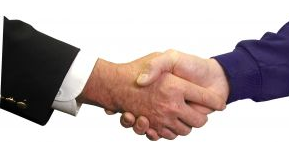Whatever the reason why you’re moving abroad, there will be a mountain of new customs to get used to. Greetings can be a very sensitive subject, you don’t want offend potential new friends or work colleagues on your first day!
While most locals will understand if you don’t know the correct way to say hello, at least making an attempt will go a long way.
Typical methods of saying hello and goodbye vary a lot from country to country, and may be completely different to what you are used to. So, what are some common greetings?
Japan
Bowing is a very important custom in Japan that it is constantly used. However, men and women bow differently. Men keep their hands by their sides, whereas women hold their clasped hand in front of them.
The 15 degree bow is the most common and is used when meeting friends and acquaintances, while the 30 degree bow, a common type of bow, is often used to thank someone or to greet a customer. Also, the 30 degree bow is seen in Japanese business situations.
France
A usual greeting in France is a kiss (or three) on the cheeks. Women will generally kiss each other, and a man greeting a woman will kiss. Kissing is much less common between two men unless they are close relatives or friends. The number of kisses depends on where you are in France. Remember however, in a business setting, a handshake is a common form of first greeting.
Venezuela
Greetings in Venezuela, like much of Latin and South America, tend to be very friendly and warm. Venezuelans normally greet their relatives and friends by kissing cheeks, patting on the back while hugging and shaking hands. When Venezuelans meet people for the first time, they usually just offer a handshake, especially in a business situation.
The Netherlands
A handshake is a very common way of greeting in the Netherlands, and much of northern Europe. Among family and friends, the Dutch give not two, but three kisses, on the cheeks. Upon the first introduction, the Dutch introduce themselves with a handshake but also in business settings they will offer their hand rather than their cheek. Moreover, Dutch people value their personal space and tend to stand further away from the person they are speaking to than in southern European countries.
Ghana
Usually, Ghanaians greet foreigners with a handshake and a smile, however, between themselves, Ghanaians hold the right hand and snap the middle finger. The louder the snap, the better! It is always important to greet people when you enter a room, and start from the left to right. Never use the left hand, since this is considered your “toilet hand”.
